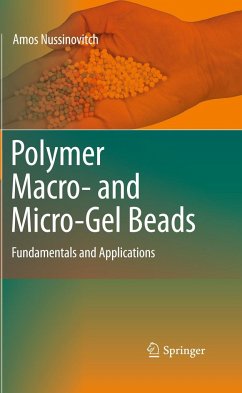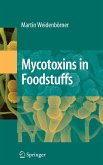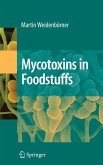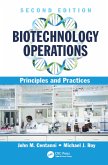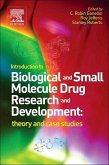The use of hydrocolloid (water-soluble polymer) beads is on the rise in many fields. A book that covers both past and new applications for hydrocolloid beads, their properties, and how to deliberately change them, is crucial. Currently there are only chapters in a handful of books covering these topics; there are no books fully devoted to them.
Water-Soluble Polymer Beads: Fundamentals and Applications fills this void. This book describes all methods of bead production and techniques to change and to estimate their physical and chemical properties. A full description of past and recent developments and applications of beads in the fields of agriculture, biotechnology, environmental studies, medicine and food are presented.
Beads made from Egyptian faience have been excavated from grave deposits (c. 4000-3100 BC), together with beads of glazed steatite (a soft rock) and of se- precious stones such as turquoise, carnelian, quartz, and lapis lazuli. Information on these and many more ancient beads used for ornaments and jewelry, ritual ceremonies, as art artifacts and gifts for amorous women throughout history, and descriptions of the raw materials (e. g. , glass, bone, precious and other stones) and manufacturing technologies used for their production can be located in many references. Many books are devoted to the description of beads that are not of water-soluble polymer origin, techniques for their production, their art, value, and distribution, re?ecting the wealth of information existing in this ?eld of science and art. On the other hand, there are no books fully devoted to the fascinating topic of hydrocolloid (polymeric) beads and their unique applications. A few books c- tain scattered chapters and details on such topics, while emphasizing the possibility of locating fragments of information elsewhere; however, again, there is no book that is solely devoted to hydrocolloid beads and their versatile applications. In the meantime, the use of water-soluble hydrocolloid beads is on the rise in many ?elds, making a book that covers both past and novel applications of such beads, as well as their properties and ways in which to manipulate them, crucial.
Water-Soluble Polymer Beads: Fundamentals and Applications fills this void. This book describes all methods of bead production and techniques to change and to estimate their physical and chemical properties. A full description of past and recent developments and applications of beads in the fields of agriculture, biotechnology, environmental studies, medicine and food are presented.
Beads made from Egyptian faience have been excavated from grave deposits (c. 4000-3100 BC), together with beads of glazed steatite (a soft rock) and of se- precious stones such as turquoise, carnelian, quartz, and lapis lazuli. Information on these and many more ancient beads used for ornaments and jewelry, ritual ceremonies, as art artifacts and gifts for amorous women throughout history, and descriptions of the raw materials (e. g. , glass, bone, precious and other stones) and manufacturing technologies used for their production can be located in many references. Many books are devoted to the description of beads that are not of water-soluble polymer origin, techniques for their production, their art, value, and distribution, re?ecting the wealth of information existing in this ?eld of science and art. On the other hand, there are no books fully devoted to the fascinating topic of hydrocolloid (polymeric) beads and their unique applications. A few books c- tain scattered chapters and details on such topics, while emphasizing the possibility of locating fragments of information elsewhere; however, again, there is no book that is solely devoted to hydrocolloid beads and their versatile applications. In the meantime, the use of water-soluble hydrocolloid beads is on the rise in many ?elds, making a book that covers both past and novel applications of such beads, as well as their properties and ways in which to manipulate them, crucial.

